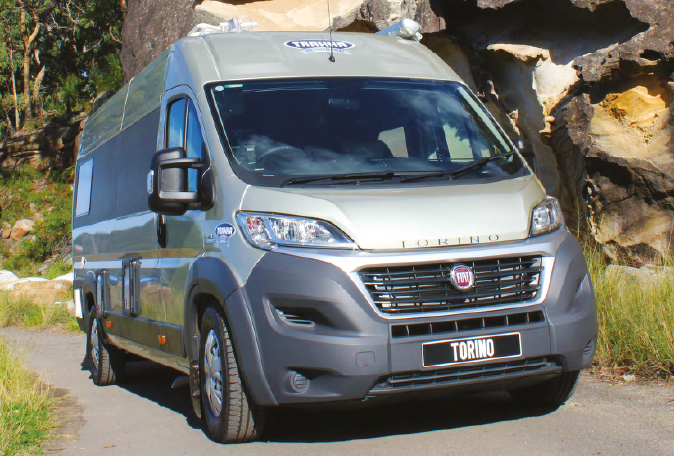
There are few Australian motorhome manufacturers who have been in business for as long as Trakka. Dave Berry began Trakka in 1973, converting T2 Volkswagen vans into campervans. The company has gone from strength to strength since, building a variety of campers and motorhomes to meet most budgets and requirements. For 2015 the Trakka Torino has been updated with LED mood lighting, new cupboards and reconfigured TV mounting.
CAB AND CHASSIS
The Fiat Ducato is one of the most popular vans on which to base a camper conversion. For 2015 the Ducato has come in for some revisions, primarily its new front hardware, suspension improvements and interior upgrades. The mechanical package remains the same.
The standard equipment on this XLWB MR (extra long-wheelbase medium-roof) version of the Ducato includes height-adjustable driver’s seat with lumbar adjustment, tilt-adjustable steering wheel, Uconnect five-inch touch-screen, CD player, USB port and AUX-in socket, cruise control, steering wheel controls and Bluetooth. A rear-view and reversing camera fitted by Trakka is also standard.
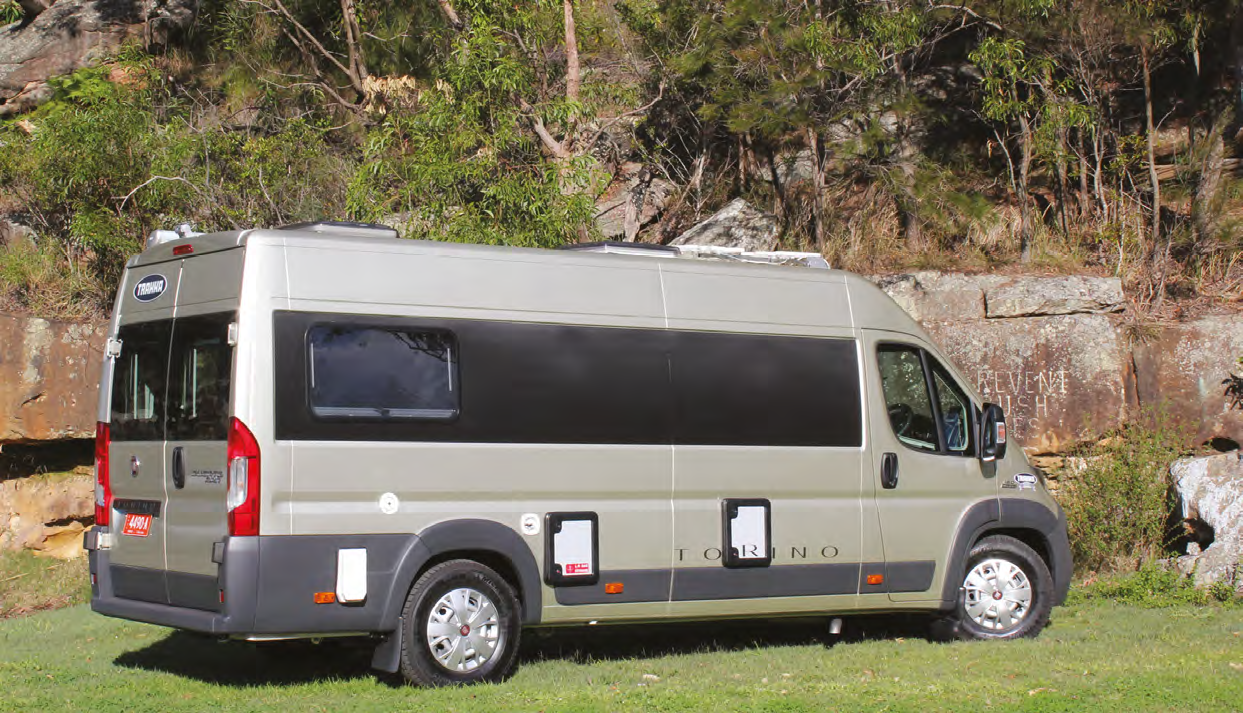
ON THE ROAD
This is a familiar vehicle to drive, given its dominance in the motorhome conversion market, so there are no surprises here. The 3.0-litre diesel in this application feels more responsive than recent Ducato-based motorhomes tested, and that can be put down to its relatively light 3200kg tare weight.
The engine is still not as smooth as some diesels in passenger vehicles, and while the mid-range torque is very good, getting up and out of the torque hole just off idle does require a bit of anticipation. This is not unusual for a turbo-charged engine, and the Ducato is not the worst in this regard.
The standard Comfort-Matic sixspeed automated manual can be left to its own devices to change forward gears or the driver can choose gears manually. In either case, the clutch is automated so there is no left-foot shuffling (and of course, no clutch pedal). This transmission takes some getting used to, and while it is almost just like a conventional automatic in easy, smooth driving, if you require quick acceleration, the pause during gear changes can feel interminably long. With the use of manual mode and anticipating gear changes with the throttle, most of this can be overcome.
The campervan conversion is one of the quietest I’ve been in, without the various rattles that can accompany a conversion.
INSIDE
The Torino’s living quarters can be accessed via the large sliding door on the nearside or from the aisle between the seats in the cab. The side access is made easier by a large power-operated step, activated by a switch on facing the nearside on the back of the kitchen bench.
The interior space is reasonably well accommodated with natural light, the front area relying on a roof hatch and the sliding door window to let in the light. The rear of the conversion has generous window space.

There is not much to do to get the Torino set-up for camp. The most fiddly thing is setting up dining arrangements, but even then this is not a troublesome task. The table leg is stored at the end of the kitchen bench adjacent to the side access, and there are two table tops. The large one, for the rear dining area, is stored in a dedicated slot in the rear offside area at the bed end. The smaller table top, for use at the front, is in the offside cupboard.
All you have to do is decide on where to set-up and attach and secure the table top to the table leg and drop it into either of the two recesses provided.

With this done, the only other set-up chores involves making up the double bed (if there is the desire to do so) and powering up the hot water and lights.
The layout in this two-berth campervan is quite simple; along the nearside going back from the sliding entrance door is the kitchen, then rear dining/seating/sleeping area. On the offside, there is a fridge, the bathroom, storage cupboard and then the rear bed area.
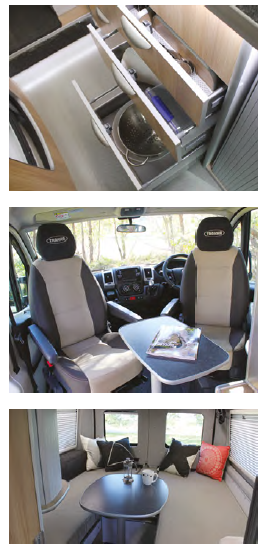
CATERING
The kitchen layout in this camper is not innovative but it is a decent size with plenty of natural and artificial light and works well. The benchtop is reasonably spacious for food preparation, with the typical hinged glass top for cooktop and sink to give more bench space. There’s a glass splashback behind the cooker, while the window behind the sink receives protection from the lid when raised. There’s a nook for small items on the end wall of the kitchen next to the cooker.
There are six drawers below the kitchen bench and a locker above. The forward end of the bench also has a three-tiered shelf concealed behind a concertina sliding door.
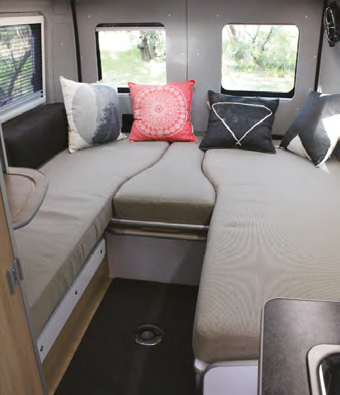
SLEEPING QUARTERS
The bed area at the back of the campervan is quite versatile. You can have it set up as two single beds or as a double bed. Stored in the cupboard adjacent to the sleeping quarters is a small drawer that slots into place between the beds. The shelf also serves as a bedside table.
The bed uses a triangular cushion at the centre rear of the van and two backrest cushions as infill towards the centre of the van to make the double bed. Some might find that a mattress topper is a good idea here to make the bed more comfortable. The sleeping quarters are partitioned from the rest of the cabin by a sliding concertina door.
KEEPING CLEAN
The bathroom is very compact but feels bigger than it is thanks to the recessed toilet. It is set on runners and is powered by an electric motor operated via a remote. When you need it, you simply slide it out with the remote and the hard work is done. There is a vanity unit in the corner, the shower rose is height-adjustable and there is a extractor fan and ventilation hatch. The sink is very small. The towel rail at first glance looks impractical as it would appear to get wet when the shower is used. This is not the case as Trakka has fitted a shower curtain that tracks around past the rail, keeping it dry.
ELECTRICS
The Torino has 240V and 12V electrical system as is the convention for campervan conversions. The interior is illuminated by 12V LED lights, as is the norm these days. Yet these ones are a bit special, as they have a dimming function. Two AGM deep-cycle batteries store the power, while an automatic battery charger feeds them from external 240V power (solar is optional). An electronic control system with LCD readout monitors battery condition, plus it provides information on water levels, indoor and outdoor temperature, clock and circuits and is mounted above the kitchen area.
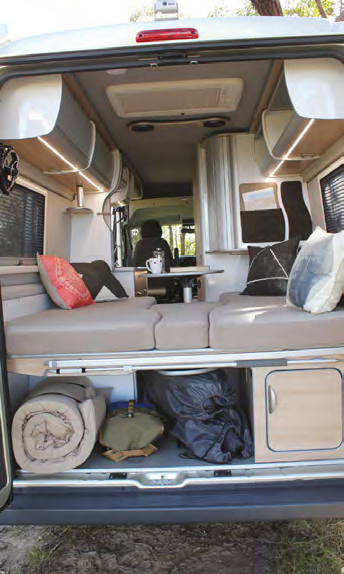
STORAGE
There are a few storage options in the Torino, although like most campervans of this stature, it isn’t abundant. The open area underneath the bed is a useful, squared-off compartment while there are lockers above the sleeping quarters. A hanging wardrobe space is found on the offside adjacent to the sleeping quarters, while various other nooks and crannies are dotted around the interior. There is also an over-cab shelf area.
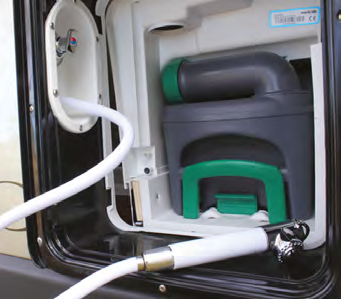
VERDICT
The Torino makes the most of a limited interior space to good effect, especially with its bed/dining options and kitchen space. It is a quality build and feels like it will last the distance. The only quibbles are that the bathroom could do with more space (particularly the sink and benchtop space) and while it is inherent to this size of campervan, it would be good to have more storage space.
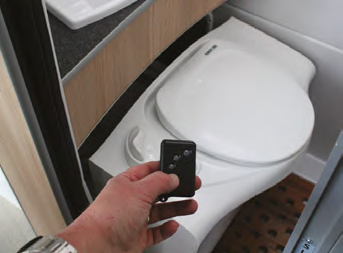
GOOD THINKING
Bed layout, kitchen size, seating options
COULD HAVE BEEN BETTER
Bathroom size, storage
Category: Reviews
Written: Sat 01 Aug 2015
Printed: August, 2015
Published By: